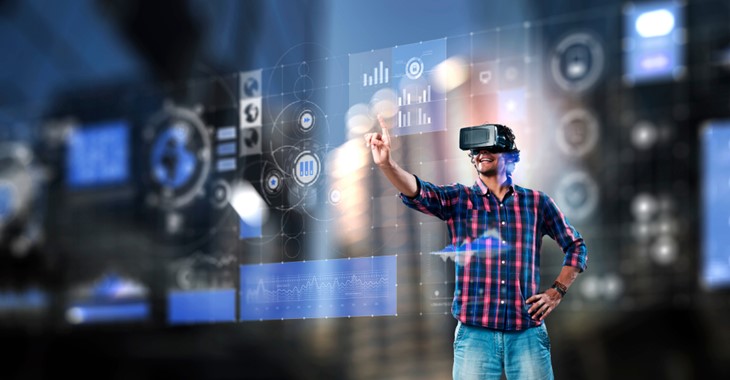How virtual reality is disrupting sectors you thought you knew

If you know anything about gaming, you’ll have heard what wearing a virtual reality (VR) headset can add to your experience. Immersing yourself in a 3D environment and interacting with your surroundings like you’re really there is a whole new spectacular way to game.
And although gaming might be the most fun most people will have with VR, many sectors are also waking up to the huge potential this state-of-the-art technology has to transform industries.
Different sectors are finding ways to use these new innovations, making cost savings, becoming more efficient and also addressing industry-specific safety concerns.
Research last year valued the virtual reality market at around $2 billion in 2016, and it’s expected to reach $26.8 billion by 2022.
With such huge growth predicted, it’s no surprise that between 2014 and 2016 the number of VR job adverts jumped 800%.
VR development is becoming a hot career path, from backend system developers and software developers and engineers to user experience experts, research engineers and system analysts all sought after. Plus, there’s huge scope for those with the skills to operate, maintain and train others in the technology.
At RHL, we’re excited about the possibilities VR will open up for our clients as well as the candidates we place. So let’s take a look at how it’s impacting three of the sectors we specialise in.
Property and construction
Developers and construction experts are recognising the potential of these new technologies. With VR, architects can test out different aspects of the design process, including layout and lighting, and get a far more accurate, detailed picture of how things will look on completion than schematics or concept rendering can ever give.
This means developers can enjoy a better view of finished properties, making it easier to make changes and therefore improve building times and avoid expensive overruns.
High-risk environments like construction call for proper safety and training. VR gives equipment operators the chance to have immersive training off-site, gaining a visual and practical understanding of how to do their job safely and effectively.
Automotive engineering
Automotive makers have started including VR in the building process to cut down the cost and time taken to design and manufacture.
For product designers and engineers it’s a way to bring new product innovations to life in the early stages of a design, whether that’s a whole vehicle or just a single component.
Being able to visualise how every aspect of a design is affected by changing one particular component, or manipulating one particular shape, eliminates the need to build expensive physical prototypes.
Ford has led the way in this. It brought in VR specialists in 2014, and Ford Immersive Vehicle Environment (FIVE) is now baked into the manufacture process with full-size 3D VR versions built of every new vehicle it launches.
Energy
Virtual reality has landed at the right time for the energy sector, as it needs to reduce its operational costs in order to be profitable.
Energy, oil and gas companies are using these new innovations to fix and maintain equipment at offshore locations, enabling specialist maintenance technicians to oversee several facilities at once from a remote base.
VR equipment can also help companies virtually explore oil fields and place drill sites with a high degree of accuracy, then monitor ongoing operations and as offshore platforms can be hazardous environments, this new technology is improving safety and training quality too.
Making a difference
In a market that’s growing at such an astonishing rate, new virtual reality developments are coming online all the time - and more and more sectors are bound to start embracing its possibilities.
When it comes to making a real difference to our lives and the way we work, we’ve only seen a fraction of VR’s potential so far. Why not choose to immerse yourself in this brave new world too?
